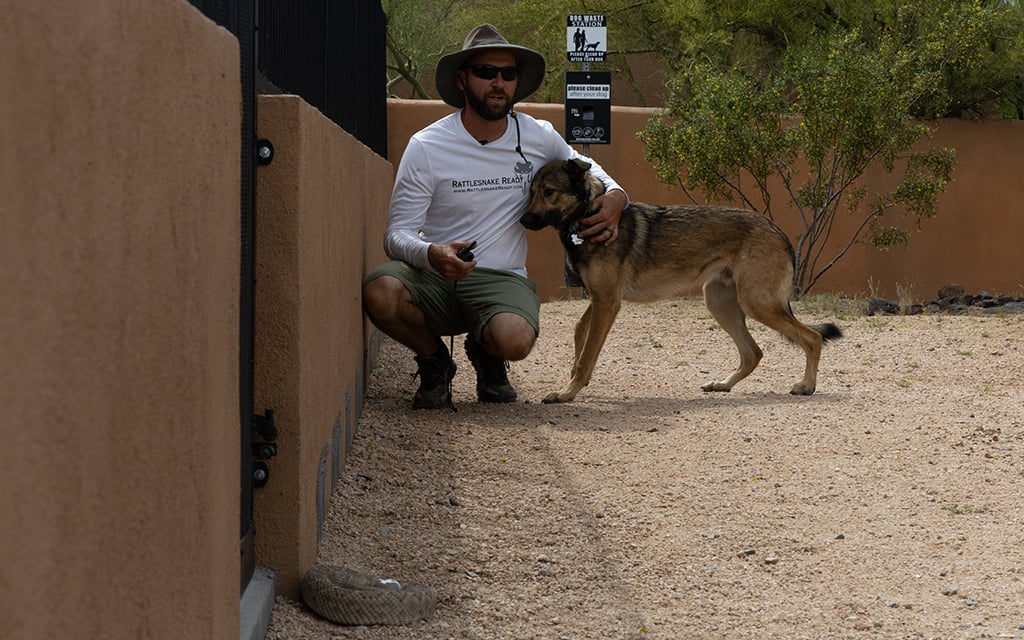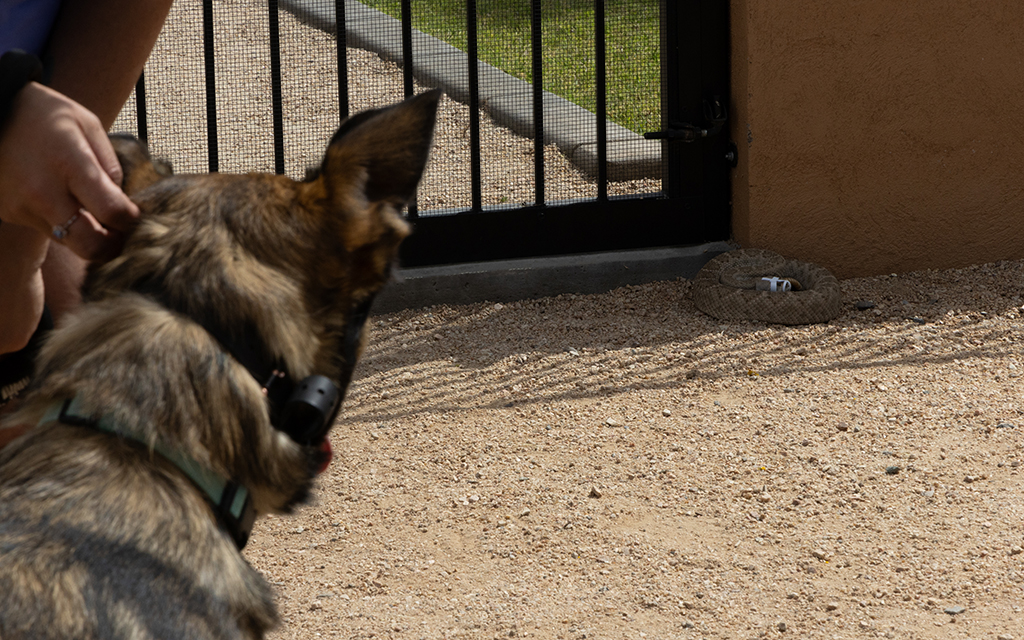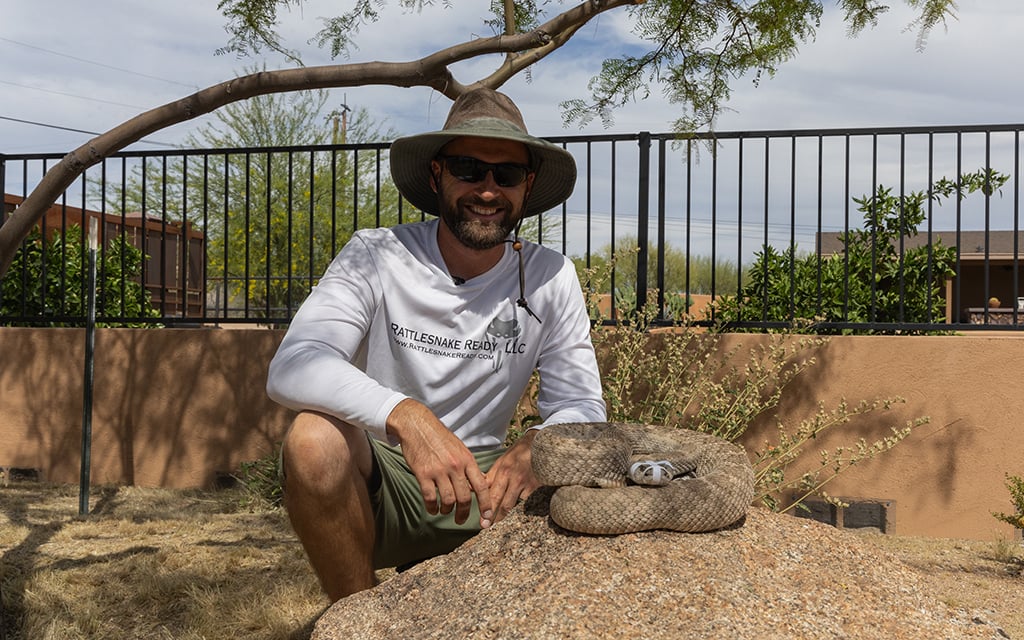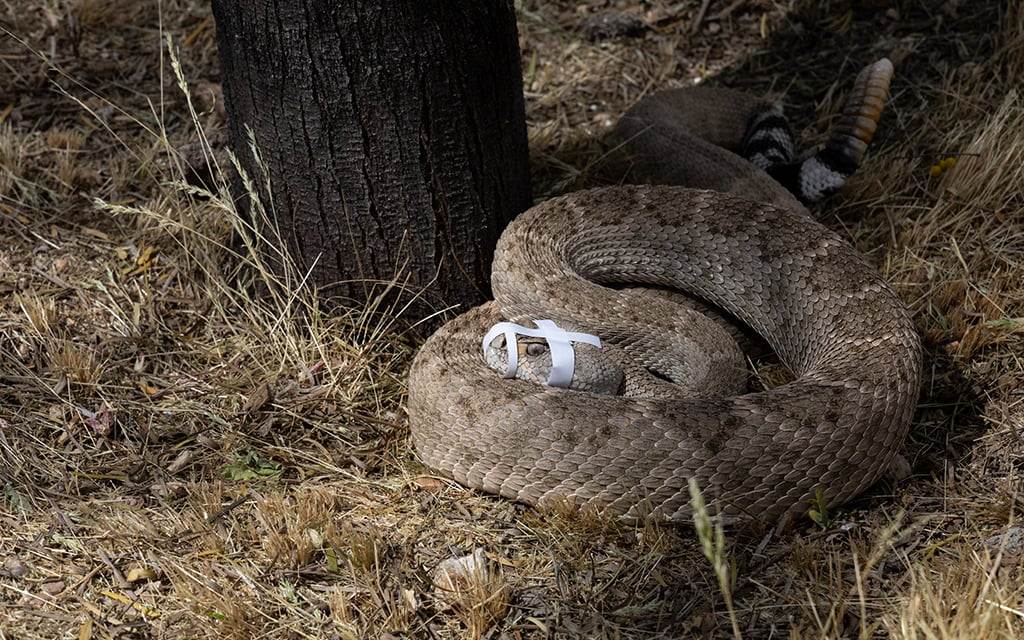PHOENIX – Rattlesnake season in Arizona is ramping up and while that means watching out for snakes – it can mean watching out for your pets, too.
Experts caution Arizonans to be aware of their surroundings while hiking or walking their dogs and to keep their eyes and ears open for the telltale signs of rattlesnakes: their coiled bodies and the unmistakable rattle of their tails.
“Certainly there are avoidable situations and potentially unavoidable situations,” said Bryan Kuhn, pharmacist and toxicologist at Banner Health Poison & Drug Information Center. “I can say that for this year, the vast majority of our bites have been these sort of unintentional, unavoidable type scenarios where someone is in an area where they are unaware there’s a snake.”
That’s where Rattlesnake Ready and Rattlesnake Ranch come in. Co-founders and owners Cody and Kate Will have built a large collection of rattlesnakes at Rattlesnake Ranch, which people can visit for a fee to see and learn about the snakes. Through Rattlesnake Ready, the pair prepare and educate pets and pet owners about these misunderstood desert creatures by utilizing ranch resources at the 2,400-square-foot nature center and training area in Cave Creek.
Cody Will said he launched the Rattlesnake Ready training program that teaches dogs to avoid the venomous reptiles because he saw a “big need for it, knew I could do it, started it for fun and it took off.”
“The training itself, the ultimate goal is to teach the dog to avoid rattlesnakes so if they ever do see, smell or hear one in the future, they have the wisdom and knowledge to leave it alone rather than approach it like most dogs do,” he said. “Teaching them to avoid them can save owners thousands of dollars in veterinary expenses because if a dog is to get bit, it’s really scary.”
According to experts at the Phoenix Herpetological Sanctuary, there are 13 different kinds of rattlesnake found throughout Arizona, from the metropolitan areas to rural peaks out in the desert. Though the Sonoran Desert is a beloved place for hiking and exploration for locals and tourists, it’s also the natural habitat for these venomous reptiles.
“We have the most rattlesnakes than any other state, without a doubt. We just have the perfect climate and habitat,” said Cale Morris, venom manager at the sanctuary. “We relocate hundreds of rattlesnakes a year. The fire department relocates hundreds. There’s other companies and organizations that also relocate hundreds. So we estimate thousands are getting relocated out of the Phoenix area.”
By using real rattlesnakes in training, Rattlesnake Ready gives dogs exposure to the very real danger rattlesnakes pose without actually putting them in danger. Medical tape is used in strips to muzzle the snakes, rendering them harmless and unable to bite the canines, while an e-collar is placed around the dogs’ necks to give them a small jolt when they get too close.
“It is humane the way we do it for the snakes. Dogs get a great encounter with a real rattlesnake, and we train them to avoid them,” Cody Will said. “The snakes only work about a day a week, and so we use them for a full day, let the dogs get close to them; we correct the dogs when they’re too close. And, so really the snakes’ only job is to just sit there and act like a rattlesnake for a few minutes at a time, kind of multiple times throughout the day.”

Rattlesnake Ready trainer Cody Will holds Arlo before having the dog run past a rattlesnake to his owner. (Photo by Emily Mai/Cronkite News)
The average training session is broken up into four parts, all geared toward getting dogs to evade the sight, smell and sound of rattlesnakes. The first part is the introduction of the small, muzzled snake followed by the initial jolt. The second part is exposing the dog to a pile of molted rattlesnake skin followed by a second jolt. The third part includes playing the sound of a rattlesnake’s warning rattle from the bushes, and having the owner jog away with their pet. And for the final portion of training, Cody Will places a larger, muzzled rattlesnake against the exit gate. Each dog has a different reaction, from giving the snake a wide berth to stopping and dashing in the opposite direction.
Though rattlesnake bites are more prevalent from March through October in Arizona, experts, like Morris and Will, say there are ways to be proactive in avoiding rattlesnake bites year-round, by understanding more about the native reptiles and taking precautions for both human and pet safety.
“Rattlesnakes are just part of the desert ecosystem out here. They’re not out to get you,” Cody Will said. “They want nothing to do with you. So if you ever come across one, it’s not really a matter of what to do, it’s more a matter of what not to do.”









